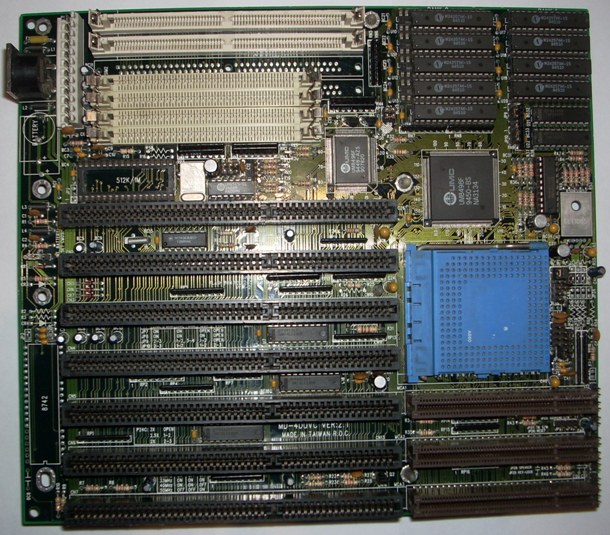Well, I just tested my board with an Intel DX2/66 CPU and it seems to work fine, even with the broken voltage regulator 😀.
As for the BIOS image, I'm attaching it, but I have some doubts... let me explain:
I don't have a programmer, so I thought about using UNIFLASH to save the image but, since UNIFLASH only supports PCI chipsets I powered up a Pentium board (i430VX-based), hot-swapped its BIOS with this one, then ran UNIFLASH.
It didn't detect the ROM chip, however it could save an 1Mbit image of it, which I find pretty weird since the chip is a DIP-28 ceramic, windowed, EPROM (I wouldn't peel the label off just yet to check its size, but are there any 1Mbit DIP-28 UV-erasable EPROMs?). If I look through the file I can find the right POST strings ("Release 01/04/95" and "01/12/94--2C4X6H01-0"), but this tool says the file doesn't seem to be a valid AWARD BIOS image: http://awdbedit.sourceforge.net/ (who knows, maybe it can only read v4.51G BIOSes, not v4.50G, it can't open the ones you tried either).
Anyway, if it's of no use to you and you can think of a way to dump the image directly from the 486 board, let me know and it gets done.
Now, your latest post brings up another interesting question for me 😀: my board too came without a battery, and I'm thinking of soldering a coin-like support in place, but I'm not sure whether the original battery was rechargeable or not - could you please check if there's any voltage there, with the board powered on and the battery taken off? The PCB shows placeholders for some diodes and resistors in that area, but I have no expertise here, so I don't know what to make of that information...
Thanks.



